John Griswold House and Newport Art Museum
Introduction
Text-to-speech Audio
Images
Outdoor art and an artist at work on the grounds of the Newport Art Museum.
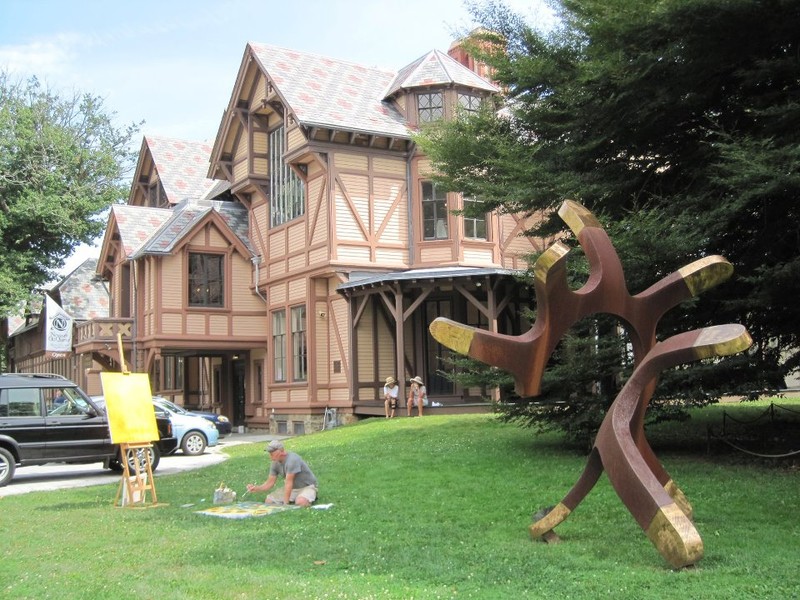
The landscaped grounds and Griswold House as seen from the rear.
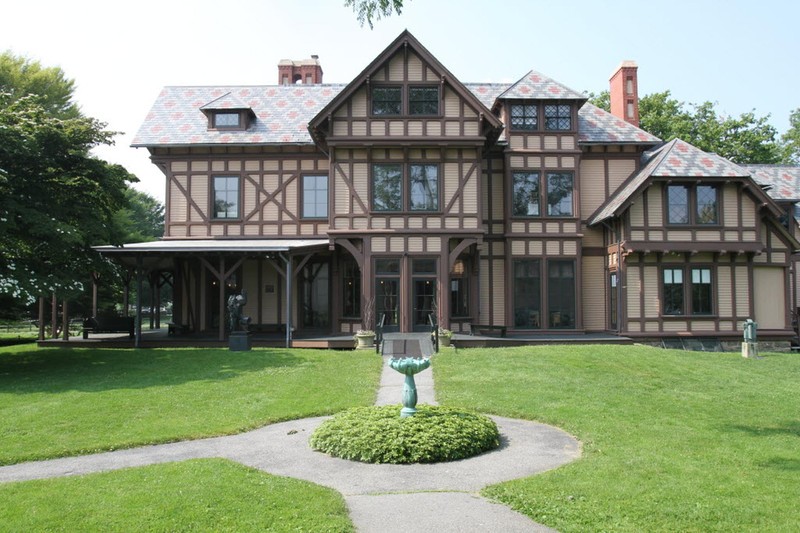
The museum's Drury Gallery was once the dining room of John Griswold.

The museum's entrance foyer and grand hallway.
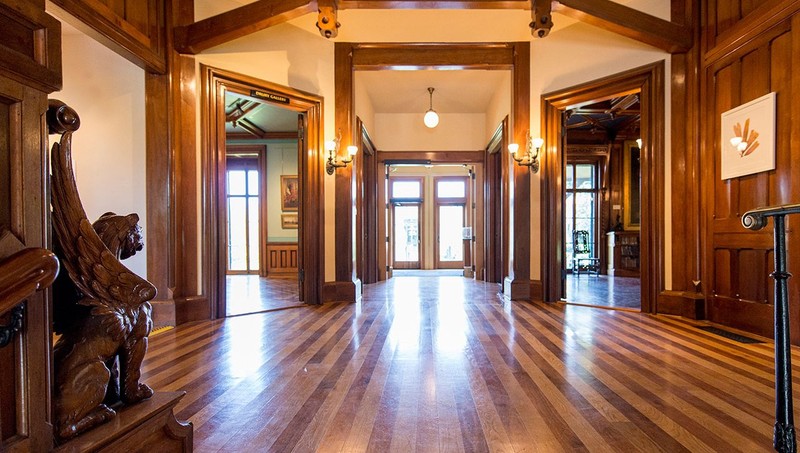
This image reveals why the Griswold House now doubles as an art and historic house museum.
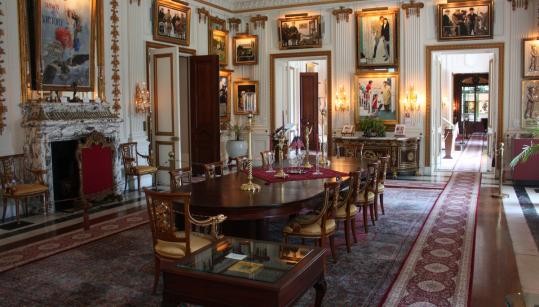
The museum's Morris/Cushing Gallery which was added to the property in 1920.
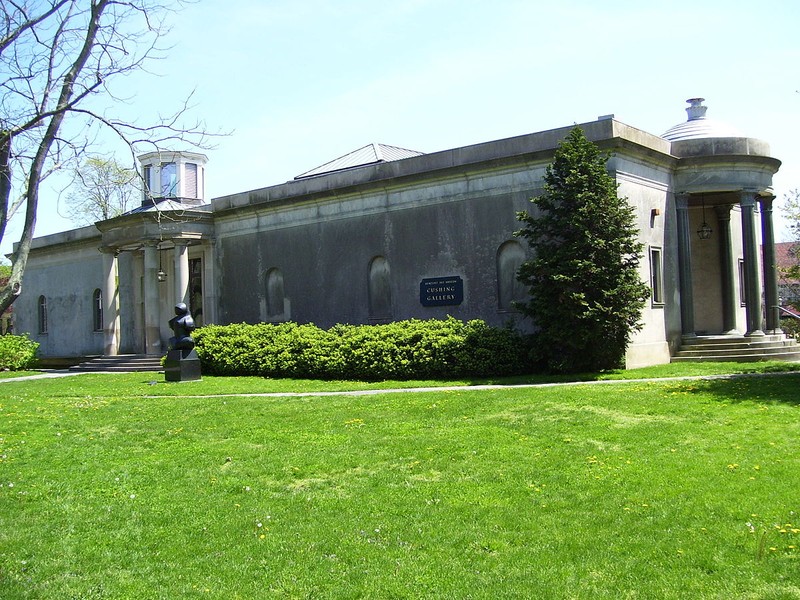
Backstory and Context
Text-to-speech Audio
In 1863, as the Civil War raged, John Griswold and architect, Richard Morris Hunt, arrived in Newport to build the Griswold family a home befitting their status as one of the wealthiest families in the country. Hunt designed what is now recognized as the first example of a mature stick-style home that was completed in 1864. The large, 2.5 story, wood-frame, asymmetrical home features numerous gables and dormers all covered with a diamond-pattern slate roof. The exterior is protected with clapboard siding with half-timbers and overhanging eaves. Its main entrance is located under a two-story porte cochere and a veranda graces its west side. Inside, the home features elaborate woodwork throughout, to include carved griffins, wood paneling and exquisite parquet floors.
The homes first owner, John Griswold, was born in 1822 in New York. Griswold’s father introduced him to the China trade. He traveled there in 1847 and was appointed the United States consul in Shanghai the next year. He served in that capacity until 1855 and then returned to America. He became involved in the burgeoning railroad industry and served as president of the Illinois Central Railroad and chairman of the Chicago, Burlington and Quincy Railroad. Griswold married Jane Louise Emmett in 1859 and the couple resided in Paris for a few years where they consulted with Richard Morris Hunt regarding their future home. Griswold’s brother-in-law had a summer home in Newport and the Griswold family decided to follow suit. The family returned to the U.S. in 1862 so that Griswold could finance volunteer troops in New York. They moved into their Newport home in 1864 and the couple divorced in 1890. At the time of his death in 1909, it was estimated that Griswold’s estate was worth over $3 million.
As for the home’s architect, Richard Morris Hunt was born in 1827 in Vermont and went on to become one of the most influential architects of the 19th century. He was the first American to study at the Ecole des Beaux Arts school in Paris, to receive the Victoria Gold Medal from the Royal Institute of British Architects and established the first American architectural school in New York City in 1858. Hunt designed the pedestal for the Statue of Liberty, the Biltmore Estate and numerous Fifth Avenue mansions in New York City (most of which have been demolished) and various Newport cottages. Throughout his career, he sought to professionalize the field of architecture and establish a formalized educational system. He also helped found the American Institute of Architects and served as its president from 1888-1891. Richard Morris Hunt died in 1895.
After Griswold passed in 1909, the home sat vacant for six years until it was purchased by the Art Association of Newport in 1915 for the princely sum of $40,000. The Association renovated the home over the next year and it opened as a gallery space and art school the next year. In 1916, the home’s original stables were renovated and eventually moved and connected to the house to create a larger gallery space in 1920. Also in 1920, a new gallery opened, named in honor of artist and founding member, Howard Gardiner Cushing. In addition to the Griswold House and Morris/Cushing Gallery, the three-acre campus is home to the Sarah Rivers Lobby, the Museum School and the Coleman Center for Creative Studies. The museum is home to over 3,000 art and archival objects from artist such as Andy Warhol, Lilla Cabot Perry, Winslow Homer and Corita Kent. It displays almost 20 exhibitions on a rotating basis. Please call or visit their website for current exhibitions.
Sources
Donovan, Leslie. "National Historic Landmark Nomination Form: John N. A. Griswold House." United States Department of the Interior/National Park Service. January, 2000. Accessed February 11, 2020. https://npgallery.nps.gov/NRHP/GetAsset/NHLS/71000023_text
"Newport Art Museum: History." Newport Art Museum. Accessed February 11, 2020.
"American Architecture Series: Richard Morris Hunt (1827-95)." Visual Arts Accessed February 11, 2020. http://www.visual-arts-cork.com/architecture/richard-morris-hunt.htm
